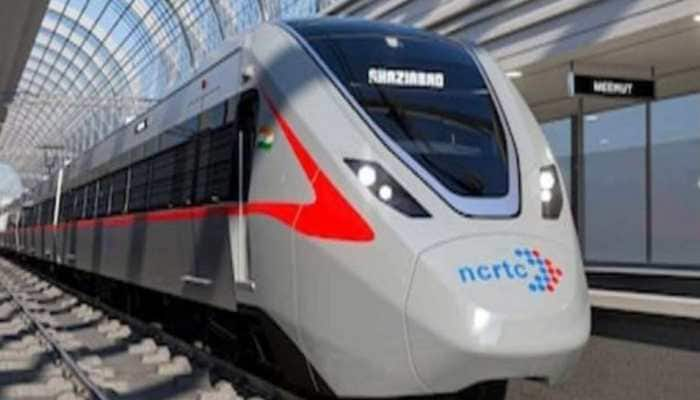Solutions to cure loopholes in India's higher education system
Systemic changes in higher education need to be made not only at the policy level, but also at the implementation stage. Vidya Naik illustrates solutions.
Trending Photos
)
Systemic changes in higher education need to be made not only at the policy level, but also at the implementation stage.
All the stakeholders including society, industry, who are consumers of the product of higher education, will be equally accountable for its revitalisation process. Government has tried to take some measures to revamp the higher education arena. The 12th five year plan (2012-2017) has focused on access, equity, quality, promotion of talent and skill development for the up gradation of higher education. Operation 'Faculty Recharge' is the University Grants Commission's (UGC) initiative for augmenting the research and teaching resources of universities. The commission had given a seven point action plan to revamp higher education in the 11th five year plan. It included points like enhancing the enrolment ratio, equity and inclusion, improving quality and excellence, academic and administrative reforms, Public Private Partnership (PPP), internationalisation of higher education and the issue of the financing of higher education. Some efforts are being taken in this direction. They are yet to show results. Looking into the enormity of the problems, it will take some time to see the desired change.
Ministry of HRD has moved the NCHER bill to promote the autonomy of higher educational institutions for the free pursuit of knowledge and innovation. It will also lead to facilitating access, inclusion and opportunities to all, a comprehensive and holistic growth of higher education and research in a competitive global environment through reforms and renovation; and an advisory mechanism of eminent peers in academia.
To bridge the gap in academic research, the Central Government in 2013, decided to set up 15 World Class Universities under Rashtriya Uchchatar Siksha Abhiyan (RUSA) under the National Higher Education Mission. Governments and State agencies traditionally have played three roles viz regulating and providing accurate public information, financing, and administering. Governments need to be assured that higher education institutions are addressing societal needs by producing the desired graduates, as well as by generating the research and service to improve citizens’ lives. The government cannot provide all the solutions to India’s higher education challenges. Most of the public expenditure on higher education is used up on salaries and maintenance of existing institutions. Very little is spent on curriculum upgradation, research and technology. Hence the entry of private players in the field. The evolution of both public and private higher education should be accompanied by autonomy with a purpose of making value addition to higher education.
Higher education should help students acquire technical, behavioral, and thinking skills to increase their productivity and growth. They also need problem solving and creative thinking skills to support higher value added manufacturing sector and business. The institutes of higher education have to move toward becoming a learning organisation, where in we keep updating ourselves continuously.
Rather than waiting for holding audits by regulatory bodies, it would be advisable for the institutes to hold self-imposed academic audits to help them build quality and relevance components. Raising the quality of academics and research is possible through a self-imposed quality assurance processes. Internally built processes are more effective as they arise out of self-discipline and with a will to progress. Involvement of all the stakeholders is imperative in the entire process. This may be complemented by external quality check and undertaken by regulatory bodies to communicate the standard of education to the world outside. It will build public faith in the processes of the educational institutions. This can be done through Internal Quality Assurance Cells (IQAC). These cells are existing in some of the higher education institutes but their functioning is a question.
Quality assurance processes (i.e. accreditation, accountability and assessment) have particular relevance today to ensure quality for a broader and more diverse set of institutions. Accountability and governance are major challenges to be handled successfully.
Education is being viewed as a business proposition by private providers. Hence just as all business organisations are required by law to publish mandatory disclosures in public domain; all educational institutions should be made to publish legally required reports at regular intervals. In addition, every educational institution must get itself rated by an independent and specialised accreditation agency, and upload the same in public domain. This will bring in much needed transparency and accountability to entire society. Multiple regulatory agencies with overlapping functions and mandates govern almost every aspect of functioning of higher education institutions. Higher education should have only one overarching regulatory body for each faculty. The regulations are related to infrastructure and other processes but there are no clear parameters related to student outcomes. Serious debate needs to decide on ways to judge institutions based on parameters such as quality of student outcomes.
Industry-Academia collaboration can help bridge the gap in theory and practice as well as update the curriculum and develop new programmes as per industry requirement. Skills thus developed will boost employability and fetch good jobs. To achieve excellence, we need to create a real partnership between government, educators and industry. Partnerships that can provide high-tech industries with skilled workers. This will reduce the financial burden on the State exchequer.
Academic programmes should be multidisciplinary and the students should be given freedom to design his/her courses as per choice, thus breaking the rigid walls between different formal faculties like Arts, Commerce and Science etc. Professional programmes will of course, have certain fixed concentration of courses. Course in humanities and environmental science could be the compulsory components. India also needs institutions for niche and specialised courses. Institutional differentiation is a logical response to the increased specialisation and importance of knowledge in higher education.
The institutes of higher education have to move towards ‘Learning Organizations’, wherein we keep updating ourselves continuously based on our learnings from different experiences. This has been advocated by Peter Senge in his book ‘The Fifth Discipline’, with respect to business organizations. Educational institutions are now acting as business organizations. In order to be a ‘Learning Organization’ there must be two conditions fulfilled at all times. First the institution has to pre-decide desired outcomes and second to check if the outcome is different from the desired ones. Corrective steps should then be taken to correct this mismatch. Organizations that are able to do this are exemplary.
Internationalisation of education has to happen will be able to pool resources to build quality initiatives as well as transcend knowledge and skill horizons. Corporate houses have established their own universities, which should ideally invest more money in research activities, rather than just provide education that other existing universities already offer. They should not just multiply access but also should differentiate in terms of products and research opportunities. Improved technology, if used for education delivery, should be able to resolve the issue of access.
Quality, employability, research and private sector participation are likely to be the core focus areas of 'higher education policy'. If the government welcomes such initiatives, the future will be ours. In order to transform our country from developing country to the developed one, we have to leverage our demographic dividend and provide skilled manpower to the entire world or else India’s youth will be left far behind in the global race.
The author is former dean, School of Distance Learning, NMIMS
Stay informed on all the latest news, real-time breaking news updates, and follow all the important headlines in india news and world News on Zee News.
Live Tv







)
)
)
)
)
)
)
)
)
)
